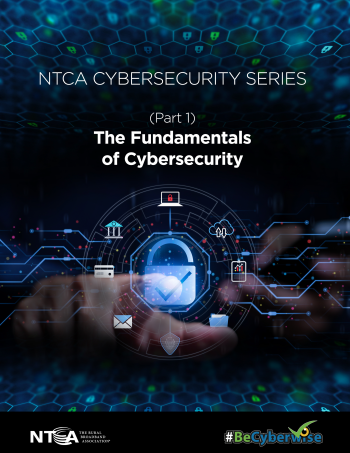
Industry Best Practices
In response to the evolving cyber-threat landscape, industry leaders and policymakers have coalesced around a dynamic, flexible, risk-management approach to cybersecurity. This new approach allows a network operator to optimize its security investments, and as a secondary benefit, is consistent with policymakers’ expectations for critical infrastructure providers.
Introducing the NTCA Cybersecurity Series
The NTCA Cybersecurity Series is intended to provide initial guidance as you work with your internal teams and lawyers, consultants, and other advisors to develop a comprehensive, companywide approach to identify, assess and manage cyber risks. The six components of the NTCA Cybersecurity Series are designed to work together to help improve your company’s cybersecurity posture.
NIST Cybersecurity Framework
The NIST Cybersecurity Framework is the preeminent resource to assist operators with developing a risk-management approach to cyber threats.
In response to presidential Executive Order 13636, on February 12, 2014, the National Institute of Standards and Technology (NIST) released the “Framework for Improving Critical Infrastructure Cybersecurity Version 1.0,” more commonly known as the NIST Cybersecurity Framework, and it has since been codified into legislation with the Cybersecurity Enhancement Act of 2014 and supported by President Trump in his May 2017 Executive Order.
Published in 2014 and revised during 2017 and 2018, NIST has come out with Version 1.1 of the Cybersecurity Framework. The Framework is voluntary and designed to help owners and operators of critical infrastructure manage their cyber risk.
NIST Privacy Framework
Modeled after the Framework for Improving Critical Infrastructure Cybersecurity (Cybersecurity Framework), the Version 1.0 of the Privacy Framework: A Tool for Improving Privacy through Enterprise Risk Management helps organizations identify and manage privacy risks. The Privacy Framework can support organizations by fulfilling current compliance, building customers' trust, and facilitating communications about privacy practices.”
CSRIC Best Practices for Small, Rural Providers
The FCC encourages small and rural communications service providers to review and consider implementing, where appropriate, 23 specific best practices recommended by CSRIC to improve network reliability and as appropriate for your network operations.

